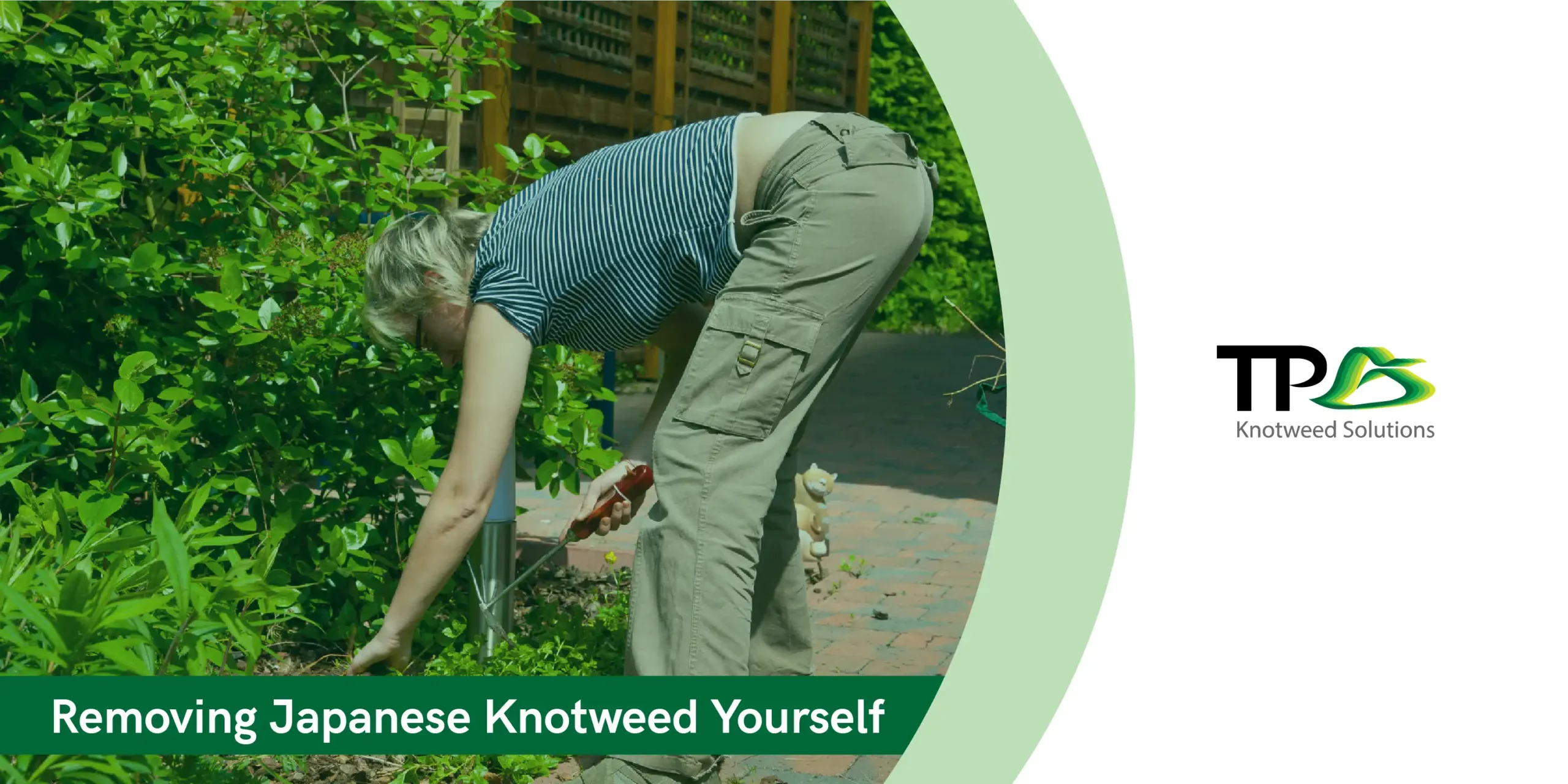The TA6 form, also known as a “Sellers Property Information Form” is populated by the seller, and given to the buyer during the sale of a property. In February 2020, the question about Japanese knotweed on the TA6 form was revised.
Here we will examine the change to the TA6 form and how it affects buyers and sellers.
WHAT MAKES JAPANESE KNOTWEED A PROBLEM?
Every garden has weeds, so what makes Japanese knotweed such a big deal?
Japanese knotweed is particularly threatening due to the way it can rapidly spread and cause damage to buildings and structures. If left unmanaged, even a small little root (rhizome) can quickly turn into a big plant.
A weed that can cause structural damage? Really? Yes, the scary thing about Japanese knotweed is that it is strong enough to grow through cracks in concrete, and even roads!
This is why there are strict laws to prevent the spread of this harmful invasive species, and why you should be extremely cautious when purchasing a property with a Japanese knotweed infestation. The value of even a highly desirable property can take as much as a 20% knock if Japanese knotweed is present.
Japanese knotweed & The Law Society TA6 Property Information Form
The Law Society TA6 Property Information Form was updated in February 2020 to put more pressure on sellers to declare whether or not their property is affected by Japanese knotweed.
If it is not known, sellers should take necessary steps to find out. This may involve instructing a specialist company such as ourselves to carry out a survey at the property.
Failing to declare Japanese knotweed is leading to a large number of misrepresentation claims against sellers. More information can be read about this in our Managing Director’s recent LinkedIn article here.
TA6 CHANGES & HOW IT AFFECTS THE SALE OF A PROPERTY
Following a court case relating to TA6 and Japanese knotweed in January 2020, the Law Society amended the answer guidance notes for the Japanese knotweed question in February 2020.
Before these amendments, the notes stated:
“The seller should state whether the property is affected by Japanese knotweed.”
However, on 7 February 2020, these notes were updated extensively to include a more detailed explanation:
“The seller should state whether the property is affected by Japanese knotweed. If you are unsure that Japanese knotweed exists above or below ground or whether it has previously been managed on the property, please indicate this as ‘Not known’. If No is chosen as an answer the seller must be certain that no rhizome (root) is present in the ground of the property, or within 3 metres of the property boundary even if there are no visible signs above ground.”
Whereas it was previously acceptable for property owners to answer “no” if the property had no history of Japanese knotweed and they were not aware of any infestations, it is no longer the case.
According to the new guidelines, a seller may only answer “no” if they are 100% certain that there are no Japanese knotweed roots present on the property or within 3 metres of the property boundary – which is particularly difficult for the typical homeowner to detect, unless they’ve found a career in invasive species!
These changes affect both buyers and sellers:
Sellers
The changes to TA6 have made it very difficult for sellers to know with absolute certainty whether there are no Japanese knotweed roots on and around their property. This is made more difficult by the “within 3 metres of the property boundary” rule, since most often this area beyond the property boundary extends into a next-door neighbour’s property. This makes it near impossible for sellers to confidently answer “no” to the Japanese knotweed question, and thus more sellers will answer “Not known”.
This has potentially serious implications for prospective buyers.
Buyers
The amendments to the legal interpretation of the Japanese knotweed question on TA6 may have unplanned financial implications for prospective buyers.
Should the TA6 form of a property you are considering buying state ‘Not known’ concerning Japanese knotweed, then you may want to conduct a Japanese knotweed survey at your own expense.
With the permission of the seller, you may contract the services of a Japanese knotweed specialist to determine whether there is any Japanese knotweed on the property.
If Japanese knotweed is found on the property, the contractor will be able to recommend appropriate measures to manage and control the infestation.
TP knotweed Solutions have been trusted by thousands of property owners throughout the UK to successfully identify and remove Japanese knotweed. If you would like to enquire online or book a survey, please click here. If you would like to speak to a member of our team for further advice, please call us on 0800 3891911.




